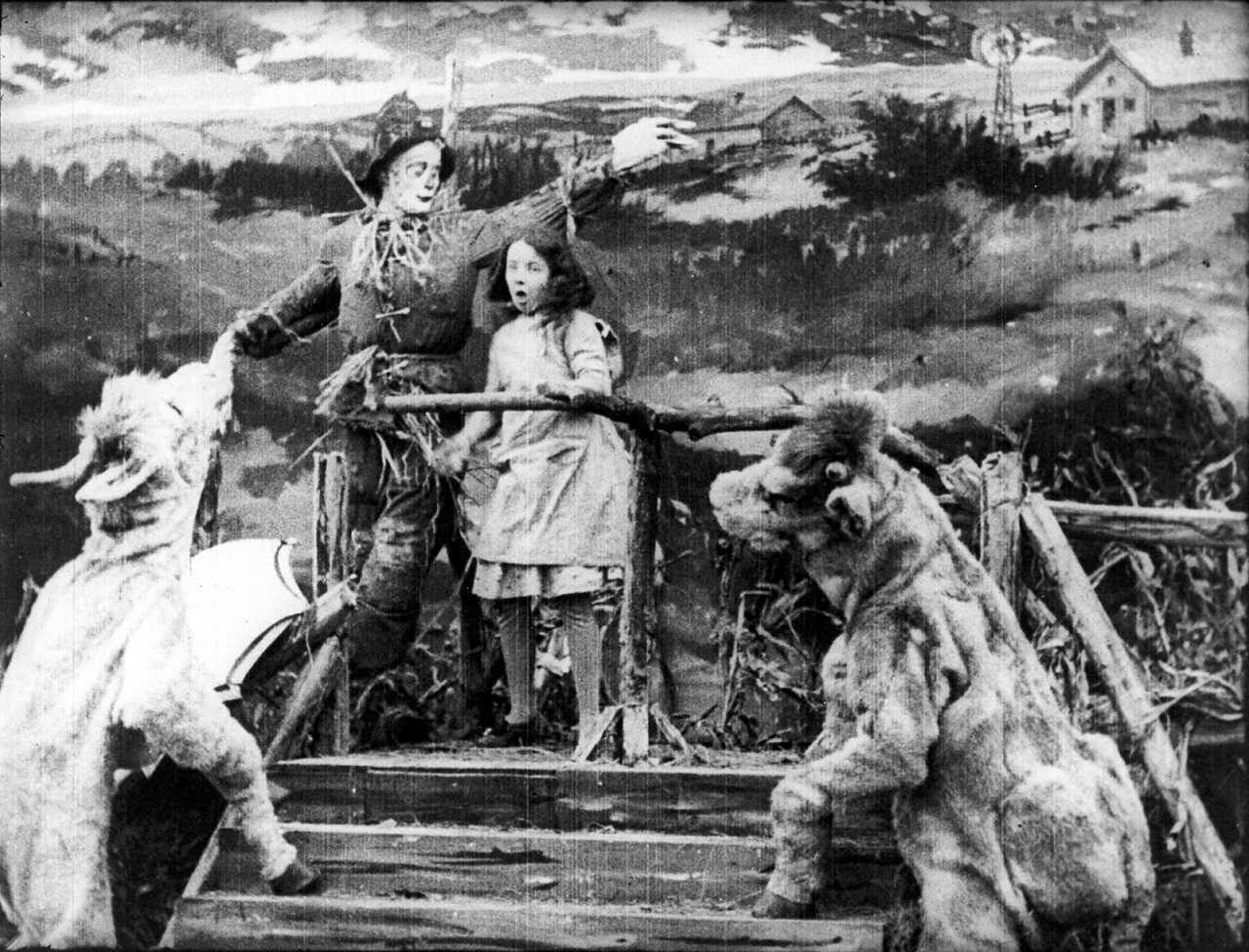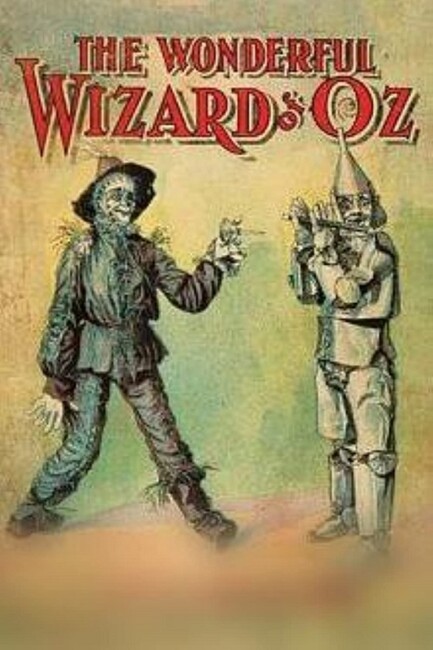aka The Wonderful Wizard of Oz
Crew
Director/Screenplay – Otis Turner, Based on the Novel The Wonderful Wizard of Oz by L. Frank Baum, Producer – William Nicholas Selig. Production Company – Selig Polyscope Company
Cast
Bebe Daniels (Dorothy), Robert Z. Leonard (The Scarecrow), Hobarth Bosworth (The Wizard), Winifred Greenwood (Momba), Olive Cox (Glinda)
Plot
Dorothy, The Scarecrow, Toto and Imogene the Cow are whisked away to the land of Oz by a cyclone. There the Wizard of Oz has issued a public decree about his pending retirement, offering his crown to whoever can free him from the witch Momba’s spell. As they journey to meet The Wizard, Dorothy is also joined by the Tin Woodsman and the Cowardly Lion where they must fight off Momba.
L. Frank Baum’s The Wonderful Wizard of Oz (1900) is a classic of fantasy literature. The MGM version The Wizard of Oz (1939) has become a landmark film that is beloved by millions. Baum wrote thirteen other Oz books in his lifetime and the fascination with these has spread to dozens of films and tv interpretations, sequels and reworkings.
There were a great many adaptations of the Oz books during the silent era with the likes of The Wizard of Oz (1908), Dorothy and the Scarecrow in Oz (1910), The Land of Oz (1910) and The Wizard of Oz (1921), almost all of which are lost today. L. Frank Baum also formed the Oz Film Manufacturing Company and oversaw three film productions, The Patchwork Girl of Oz (1914), The Magic Cloak of Oz (1914) and actually directed His Majesty, The Scarecrow of Oz (1914), all of which are still in existence today. The most well known silent production still in existence is Wizard of Oz (1925), a version starring Oliver Hardy of Laurel and Hardy fame as the Tin Woodsman, although this is a slapstick comedy that varies widely from the book. The Wizard of Oz/The Wonderful Wizard of Oz is the earliest of these silent films still around today. Hailing in at only fifteen minutes in length, it was considered lost for many years until a restored version was released in 2004.
This version is odd watching when one comes to it after being familiar with the 1939 film and numerous other takes on the story. It is decidedly liberal with Baum’s text. Dorothy is joined by The Scarecrow before she is even transported to Oz, for instance. Her compliment of companions is bumped up from the usual four to six, including a pantomime cow (a holdover from the stage version of the book) and an unidentified other male along for the journey. The Wicked Witch of the West has been replaced by a witch called Momba, which one presumes is a misspelling of Mombi, who fulfils the same role.

In its fifteen-minute runtime, this gets through most of the basics of The Wizard of Oz. It does require a familiarity with the story in order to get what is going on. In the plot on screen, things just happen – Glinda appears, they find the Tin Woodsman – with no real explanation of why anything is happening. Anybody sitting down to watch this with no familiarity with the original would be highly confused as to what is going on – what we have operates as not too much more than a filmed version of highlights from the stage play. What this indicates is that Baum’s books had such a popularity back in 1910 that most audiences would have been coming to view the film as a filmed version of a story they already had familiarity with.
This is also a fairly primitive version. Both Toto and Imogene are represented by actors in pantomime animal suits. The cyclone is represented by a large papier-mache ball that twirls around on stage with them plastered on the outside. All of the action takes place on a series of painted sets that give the impression they were made for the stage while the magic is represented by crude effects of people being lifted up and swung about on wires, or else stop-action camera effects. Georges Melies had already discovered most of these over a decade earlier and was doing far more sophisticated things by this period.

